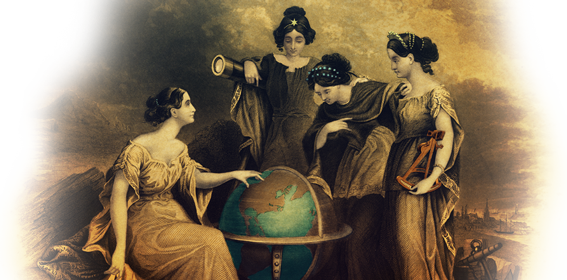Economic Imaginaries

Timothy Pitkin. A Statistical View of the Commerce of the United States of America: Including also an Account of Banks, Manufactures and Internal Trade and Improvements: Together with that of the Revenues and Expenditures of the General Government: Accompanied with Numerous Tables. New Haven: Durrie and Peck, 1835. p. 127.
What was considered “knowledge” became in the mid nineteenth century more numerical through the spread of an exciting new science of statistics. American books and magazines were increasingly filled with tables of statistics meant to represent reality more accurately than ever before, even though the empirical basis underlying such statistics was generally a mystery shrouded in an enigma.
Elected to Congress in 1805, Timothy Pitkin of Connecticut began to gather economic data as a way to support his political stance favoring a diplomatic over military response to escalating tensions with Britain. The statistics he fed Congress failed to stave off the outbreak of the so-called “War of 1812,” but after the war Pitkin published a pioneering book of American statistics. Insisting that European countries like Britain possessed superior knowledge of their own economic resources, Pitkin in 1816 argued that Americans should better know their own country economically — just as Jedidiah Morse in 1789 had argued that Americans should better know their own country geographically.
For James D.B. DeBow, supervisor of the seventh U.S. Census in 1850, the main spring of economic competition was not between the United States and Europe, but between the South and the North within the United States. DeBow urged the South to cultivate modern economic knowledge so it might compete more effectively with the North.
Yet DeBow was a nationalist as well as a southerner. The very ability to compile economic statistics, he insisted, measured a country’s stature in the world compared to countries unable to do so. A great nation like the United States should be exceptionally able to preserve data and to produce statistics. To master these techniques, an energetic young man like DeBow could, in his time, join an organization devoted to the science of statistics: the American Statistical Association formed in 1839.
How to find the raw data from which to generate neat tables of supposedly truth-telling statistics? This dilemma pressed perhaps most fiercely on an American-born international peace activist, Elihu Burritt, who undertook the project of generating national statistics for every notable country in the world. Burritt did so by relying on British, French, and German statistics — far from any global reality. National statistics were hard enough to generate in the first half of the nineteenth century; global statistics were impossible.
EXPLORE THE DIGITIZED BOOKS
Click on a title below to access a transcribed excerpt, and a fully digitized book.
Timothy Pitkin. A Statistical View of the Commerce of the United States of America: Its Connection with Agriculture and Manufactures: and an Account of the Public Debt, Revenues, and Expenditures of the United States. Hartford: Charles Hosmer, 1816.A pioneer in an emerging new science of statistics, Pitkin struggled with the limited availability of raw data from which to generate telling statistics.
Timothy Pitkin. A Statistical View of the Commerce of the United States of America: Including also an Account of Banks, Manufactures and Internal Trade and Improvements: Together with that of the Revenues and Expenditures of the General Government: Accompanied with Numerous Tables. New Haven: Durrie and Peck, 1835.Between 1816 and 1835 Pitkin could assemble much more economic data, to generate many more tables of statistics establishing the United States as the “second commercial nation” behind Britain.
James D.B. DeBow. Statistical View of the United States, Embracing its Territory, Population — White, Free Colored, and Slave — Moral and Social Condition, Industry, Property, and Revenue.... Washington DC: A.O.P. Nicholson, Public Printer, 1854.A publisher who filled his magazine with sundry statistics, DeBow could extract copious data from the sophisticated 1850 federal census which he himself had overseen.
William J. Bromwell. History of Immigration to the United States, Exhibiting the Number, Sex, Age, Occupation, and Country of Birth, of Passengers Arriving in the United States By Sea from Foreign Countries, from September 30, 1819, to December 31, 1855.... New York: Redfield, 1856.Bromwell tried to apply the reason of statistics to the 1850s debate over immigration, when nativists thundered against the Irish Catholic immigration in particular.











